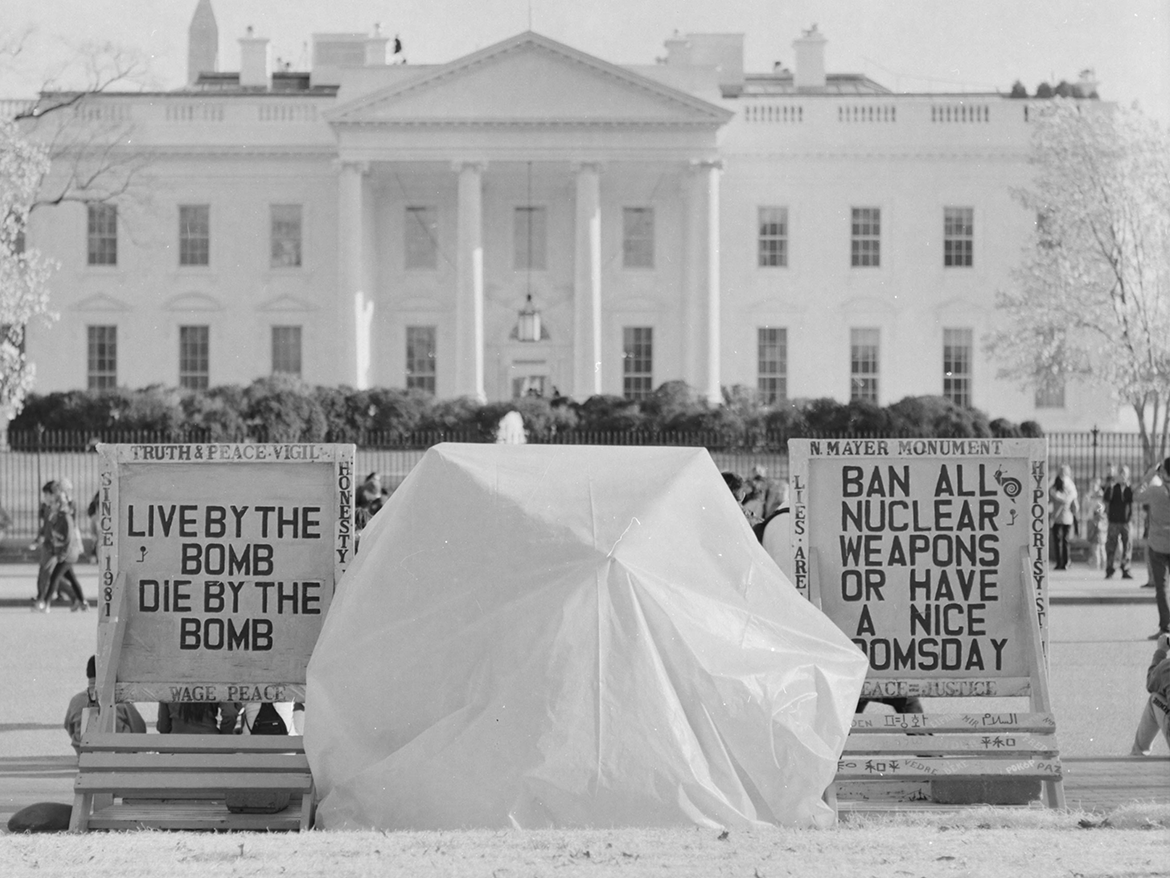With a flash of light in 1945, American scientists brought nuclear weapons into the world. Ever since that moment, FCNL has been working to eliminate these terrible weapons. This work has gained grave new urgency.
Where We Are
Despite promises to reduce the role of nuclear weapons in U.S. national security, the current administration continues to chart a dangerous nuclear course. Congress should shift priorities, reform budgets, and change our country’s direction.
Congress has approved the development of new types of nuclear weapons that aim to convince others that the United States is ready to use these weapons. The last thing our country needs is to make it easier for any president to think about using nuclear weapons. Yet in 2019, Congress approved deployment of a new “low-yield” warhead for submarine-launched ballistic missiles, which increases the likelihood that the president would consider using nuclear weapons.
Congress should change priorities, change budgets, and change our country’s direction.
Massive down payments are now underway on a $1.2 trillion, decades-long plan to extend, enhance, and expand America’s bloated, Cold War-holdover nuclear arsenal. In addition to building dangerous new quick-strike cruise missiles, the United States is starting work on an entirely new silo-based intercontinental ballistic missile (ICBM). ICBMs are particularly destabilizing because within moments of being warned of a possible nuclear attack, the president must decide whether to launch them or risk losing them. There have been many false alarms in the past, and these weapons make it too easy to start an all-out nuclear war by accident.
The broad array of bilateral arms control agreements negotiated during the Cold War has virtually disappeared now, but the threats they were designed to address have not. The United States withdrew from the Anti-Ballistic Missile (ABM) Treaty in 2002, the 1988 Intermediate-Range Nuclear Forces (INF) Treaty in 2019, and the Open Skies Treaty in 2020. On the multilateral side, the Senate has failed to ratify the Comprehensive Nuclear Test Ban Treaty, and the U.S. government has pressured other countries to vote against the Treaty on the Prohibition of Nuclear Weapons, which went into effect in January 2021 with the support of two-thirds of the world’s nations.
What Can We Do?
The only real answer is to eliminate all nuclear weapons. But as we continue toward that goal, Congress should take shorter-term actions that deescalate arms races and reduce the chances of nuclear use:
- Acknowledge and support the communities who were harmed by previous nuclear weapons testing and use.
- Prohibit the president from using nuclear weapons first in a crisis unless Congress declares war and specifically authorizes nuclear first strike capabilities.
- Pursue and support bilateral and multilateral talks with other nuclear-armed nations, such as the current strategic stability conversations between the United States and Russia.
- Pause research, development, testing and acquisition of new, unnecessary, and expensive nuclear weapons, including the Ground Based Strategic Deterrent (GBSD) and upgraded air- and sea-launched nuclear-armed cruise missiles.
Some weapons are too terrible to ever be used. Nuclear weapons, like chemical and biological weapons, should be eliminated from the U.S. arsenal. As President John Kennedy said in 1961, “a nuclear disaster, spread by wind and water and fear, could well engulf the great and the small, the rich and the poor, the committed and the uncommitted alike.” They do not make Americans, or anyone else, more secure.
For more than 75 years, FCNL has worked to reduce and eliminate the dangers that these weapons pose. We will continue our efforts to help Congress and the American public understand these dangers and identify more ethical and effective strategies for advancing human security.
Join our email list!
Stay informed and stay active

